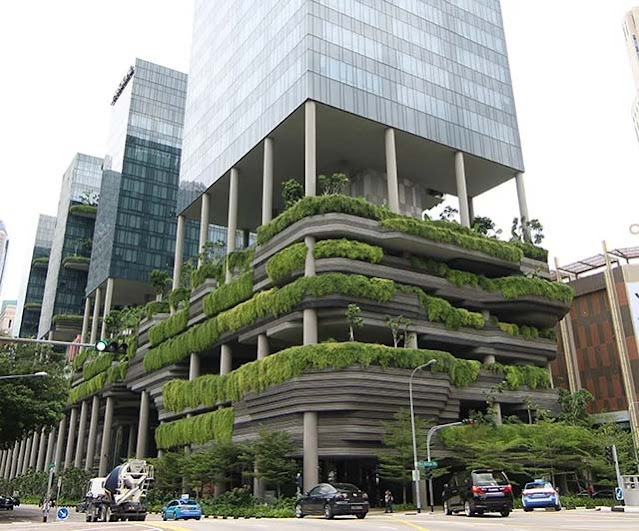The Growing Importance of Vertical Farming in Urban Agriculture
Introduction
As the world's population continues to grow, the demand for food production is increasing exponentially. The United Nations estimates that by 2050, the global population will exceed 9.7 billion people, and feeding such a massive population poses a significant challenge. One innovative approach to address this issue is vertical farming, a high-tech and sustainable method of growing food in urban environments. In this blog post, we will explore the growing importance of vertical farming in urban agriculture and how it is revolutionizing food production in cities worldwide.
What is Vertical Farming?
Vertical farming is the practice of growing crops in vertically stacked layers, often using hydroponics, aeroponics, or aquaponics systems. This method of agriculture has gained traction in recent years, as it offers numerous advantages over traditional farming, such as increased crop yields, reduced water usage, and the ability to grow food in areas with limited space or poor soil quality.
Benefits of Vertical Farming
Year-round production
One of the most significant advantages of vertical farming is the ability to produce crops year-round, regardless of the season. Controlled environmental conditions, such as temperature, humidity, and light, allow for continuous growth and harvest of various crops.
Space efficiency
Vertical farming is a perfect solution for urban areas with limited space. By growing crops in stacked layers, vertical farms can produce a substantial amount of food in a small footprint, making them ideal for city centers and other densely populated areas.
Water conservation
Traditional farming methods require a significant amount of water, which is becoming an increasingly scarce resource. Vertical farming systems, on the other hand, use hydroponics or aeroponics to recycle water, resulting in up to 95% less water usage than conventional agriculture.
Reduced pesticides and herbicides
Since vertical farms are typically grown in controlled environments, there is a reduced need for chemical pesticides and herbicides. This leads to healthier, cleaner crops and a reduced impact on the environment.
Local food production
Vertical farming enables the production of fresh, local food in urban areas, reducing the need for long-distance transportation and associated carbon emissions. This leads to fresher produce with a smaller carbon footprint.
Examples of Successful Vertical Farms
AeroFarms - Newark, New Jersey, USA
AeroFarms is an indoor vertical farming company that grows leafy greens and herbs using aeroponics technology. The company's state-of-the-art facility in Newark, New Jersey, is capable of producing up to 2 million pounds of fresh produce per year.
Sky Greens - Singapore
Sky Greens is a vertical farm located in Singapore that grows a variety of Asian vegetables using a unique rotating A-frame system. The farm produces up to ten times more crops per square foot than traditional farming methods and uses 95% less water.
Green Sense Farms - Portage, Indiana, USA
Green Sense Farms is an indoor vertical farm based in Portage, Indiana, that produces a variety of greens and herbs using energy-efficient LED lighting and hydroponic technology. Their innovative farming methods allow them to grow crops in a controlled environment with minimal water usage and no need for pesticides.
Spread - Kyoto, Japan
Spread is a Japanese vertical farming company that operates one of the largest indoor lettuce farms in the world. Their technologically advanced facility in Kyoto, Japan, uses a combination of hydroponics and automation to produce high-quality, pesticide-free lettuce on a large scale.
The Future of Vertical Farming in Urban Agriculture
As the world's population continues to grow, the need for innovative and sustainable food production methods becomes more critical. Vertical farming offers a promising solution to address these challenges, providing numerous benefits such as increased crop yields, reduced water usage, and the ability to grow food in urban areas with limited space.
In the coming years, vertical farming is expected to become an increasingly essential component of urban agriculture. As technology continues to advance, we can expect to see even more efficient and cost-effective vertical farming systems that will revolutionize the way we produce and consume food in cities around the world.
Conclusion
Vertical farming is a game-changing approach to food production that addresses many of the challenges associated with traditional agriculture. Its benefits, such as year-round production, space efficiency, water conservation, and reduced chemical usage, make it an increasingly attractive option for urban areas. As successful vertical farms like AeroFarms, Sky Greens, Green Sense Farms, and Spread continue to pave the way, it is clear that vertical farming will play a crucial role in the future of urban agriculture and food security worldwide.













No comments: